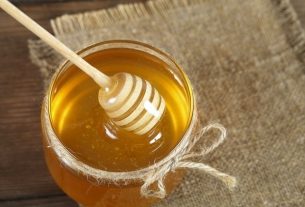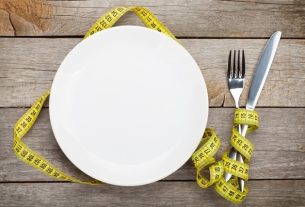In the diet for fatty liver, it is important to increase the consumption of fresh and natural fruits, fresh vegetables and whole grains rich in fiber. On the other hand, you should reduce your intake of sweets, such as soft drinks, sugar and juices, carbohydrates, such as white bread, white pasta and white rice, and fatty foods, such as margarine and fried foods in general.
The liver fat diet aims to improve the quality of food to reduce fat levels in the body, alleviate some symptoms, which may include loss of appetite, pain on the right side of the belly and headache, in addition to avoiding complications, as is the case with cirrhosis.
Fatty liver, also known as hepatic steatosis, is usually caused by poor eating habits, a sedentary lifestyle or obesity. Hepatic steatosis can also appear as a consequence of metabolic syndrome, which is when you have one or more associated diseases, such as diabetes, high cholesterol and high blood pressure. Better understand the causes and symptoms of fatty liver.

What to eat
Foods that should be prioritized in the diet for fatty liver are:
- Fresh and natural fruitssuch as apple, pear, pineapple, peach, papaya, strawberries, kiwi, tangerine, orange, soursop, lemon and plum;
- Fresh vegetablessuch as zucchini, arugula, spinach, eggplant, lettuce, tomato, onion, carrot and watercress;
- Grainssuch as beans, lentils and chickpeas;
- Whole grainssuch as brown rice, wholemeal bread, wholemeal pasta, quinoa, wild or black rice and rolled oats;
- Low-fat proteinssuch as eggs, tofu, lean red meat, skinless chicken and turkey, with greater preference for fish;
- Low-fat milk and dairy productssuch as skimmed milk and yogurt, and white cheeses, such as ricotta, cottage and Minas frescal.
The diet for fatty liver should be characterized by the consumption of fresh and natural foods, with a reduction in the consumption of processed foods.
Foods that can be consumed in moderation
Some foods, despite containing fats, can be consumed in moderation and in small portions in case of fatty liver, such as olive oil, avocado, coconut, peanuts, chestnuts, walnuts and fish rich in omega 3, such as salmon and sardines.
These foods are rich in monounsaturated and polyunsaturated fat, contain compounds with antioxidant properties and, in the case of fruits such as coconut and avocado, contain fiber, providing benefits for treating fatty liver.
See our nutritionist for more suggestions for combating fatty liver in the following video:
Foods that should be avoided
Foods that should be avoided when treating fatty liver are:
- Foods rich in fatsuch as yellow cheeses, cottage cheese, bacon, lamb, beef picanha, chicken skin, pork, chocolate, butter and margarine;
- Refined cerealssuch as white rice, white pasta, white bread and oatmeal;
- Foods rich in sugarsuch as cookies, ice cream, sweets in syrup, jellies and fruit or industrialized juices, such as boxed, bottled or powdered juices;
- Processed foodssuch as ready-made sauces, instant noodles, fast food, sliced bread and frozen foods;
- Sausagessuch as ham, turkey breast, turkey blanquet, sausage, mortadella, salami, sausage and sirloin;
- Fried food;
- Fast and frozen foodssuch as nuggets, fries, burgers, lasagna and pizza.
It is also essential to stop drinking alcoholic beverages, such as beer and wine, as alcohol can overload the liver, making treatment difficult.
Menu option for fatty liver
The following table provides an example of a 3-day menu for liver fat:
This menu is just an example of a diet, which may vary depending on whether the person has other health problems or not. For better monitoring, it is recommended to consult a nutritionist for a complete assessment and planning of a diet according to individual needs.
If you want to eat the right diet for your needs, schedule an appointment with the nutritionist closest to you:
Other recommendations
During the diet to treat fatty liver, it is also important to drink plenty of water throughout the day, with a minimum of 2 liters per day being recommended. A good option to increase water consumption is by drinking some types of tea, such as boldo tea, artichoke tea and green tea, which in addition to being hydrating, also have properties that help the liver function. Discover other tea options for fatty liver.
Furthermore, it is important to sleep 7 to 9 hours a day and practice physical activity regularly. These are some healthy habits that help with energy metabolism and hormone regulation, directly contributing to reducing liver fat. See other tips for eliminating liver fat.
Bibliography
- BISCHOFF Stephan C et al. European guideline on obesity care in patients with gastrointestinal and liver diseases e Joint ESPEN/UEG guideline. Clinical Nutrition. 41. 10; 2364-2405, 2022
- NIH. Eating, Diet, & Nutrition for NAFLD & NASH How can my diet help prevent or treat NAFLD?. Disponível em: <https://www.niddk.nih.gov/health-information/liver-disease/nafld-nash/eating-diet-nutrition>. Acesso em 29 nov 2022
- KARGULEWICZ Angelika et al. Dietary recommendations for patients with nonalcoholic fatty liver disease . Przeglad Gastroenterologiczne Journal. 9. 1; 18–23, 2014
- According to Kenneth et al. American Association of Clinical Endocrinology Clinical Practice Guideline for the Diagnosis and Management of Nonalcoholic Fatty Liver Disease in Primary Care and Endocrinology Clinical Settings. Clinical practice guidelines . 28. 5; 528-562, 2022
- VIEIRA, A, Karina et al. Nutritional treatment of liver disease. Demetra-Food, Nutrition and Health. Vol.15. 1-15, 2020
- SCHEIDT, Lucimar et al. Nutrition of non-alcoholic fatty liver disease and metabolic syndrome: an integrative review . UNIPAR Health Sciences Archives. Vol.22. 2.ed; 129-138, 2018
- BRAZILIAN SOCIETY OF PARENTERAL AND ENTERAL NUTRITION. Nutritional Therapy in Chronic Liver Diseases and Liver Failure. 2011. Available at: <https://diretrizes.amb.org.br/_BibliotecaAntiga/terapia_nutricional_nas_doencas_hepaticas_cronicas_e_insuficiencia_hepatica.pdf>. Accessed on November 15, 2019
- MARCHESINI, Giulio et al. Diet, weight loss, and liver health in nonalcoholic fatty liver disease: Pathophysiology, evidence, and practice. Hepatology. Vol.63(6). 2032-43, 2016
- SCHEIDT, Lucimar et al. Nutrition in non-alcoholic fatty liver disease and metabolic syndrome: an integrative review. Scientific Arch. UNIPAR Health. Vol.22(2). 129-138, 2018
- MAHAN, L. Kathleen et al. Krause: Food, Nutrition and Diet Therapy. 13.ed. São Paulo: Elsevier Editora, 2013. 645-664.

Sign up for our newsletter and stay up to date with exclusive news
that can transform your routine!
Warning: Undefined array key "title" in /home/storelat/public_html/wp-content/plugins/link-whisper-premium/templates/frontend/related-posts.php on line 12
Warning: Undefined array key "title_tag" in /home/storelat/public_html/wp-content/plugins/link-whisper-premium/templates/frontend/related-posts.php on line 13





